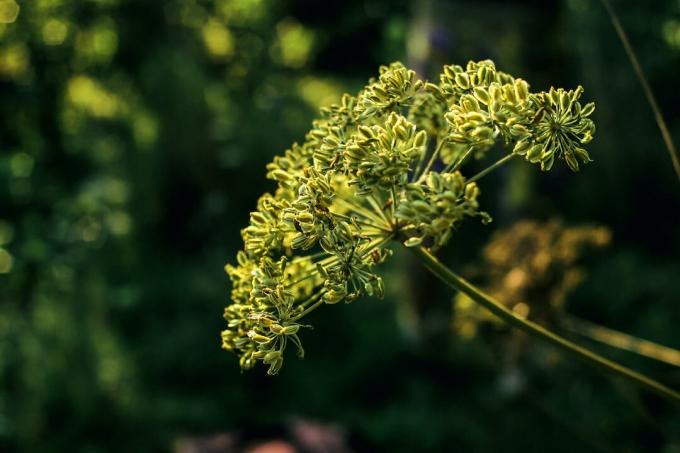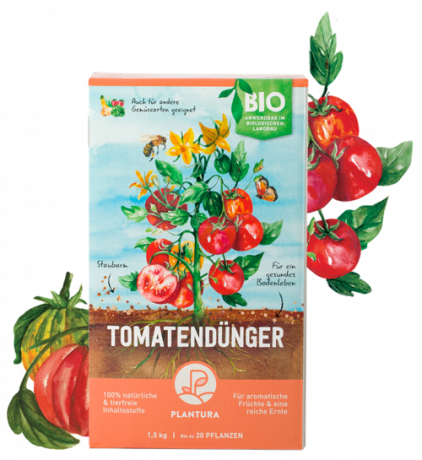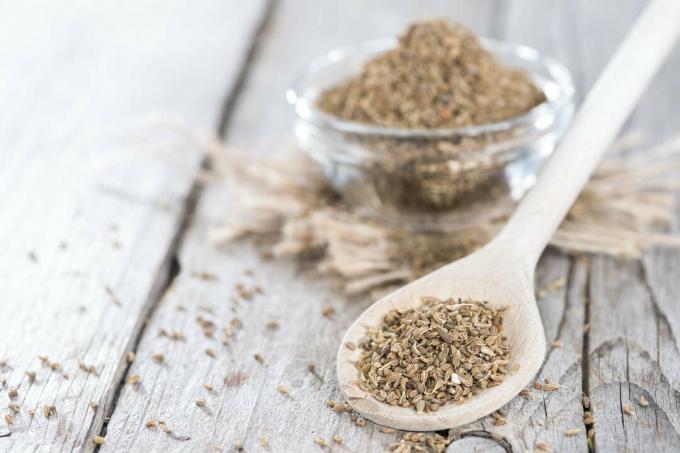Most only know the anise stars as a spice in the kitchen. We will introduce you to the actual aniseed plant and tell you how to plant aniseed in the garden.

The spicy, Christmassy star anise from the tropics (Illicium verum) has a namesake that has little to do with him. anise (Pimpinella anisum) is a spice that has been used for thousands of years and a medicinal plant that also thrives here. In this plant portrait you will learn everything about anise, its history as well as its cultivation and use.
Contents
- Anise: origin and properties of the anise plant
-
Planting anise: tips for growing
- The right location for anise
- How to sow anise seeds
- Maintain anise plant
- Harvest anise from the garden
- Ingredients and uses of aniseed
Anise: origin and properties of the anise plant
Anise belongs to the umbelliferae family (Apiaceae) and is thus closely related to fennel (Foeniculum vulgare), coriander (Coriandrum sativum
) and Caraway seeds (Carum carvi) related. Already 1500 BC Chr. Anise was recommended as a remedy in a collection of recipes from ancient Egypt. The plant originally comes from the eastern Mediterranean countries and reached Germany in the luggage of Benedictine monks at the time of Charlemagne. Anise is occasionally found growing wild in meadows and at the edges of forests. Today, aniseed is grown in North Africa, Central and South America, India and central to southern Europe, with the largest area under cultivation in Europe being in Spain.The annual anise plant has three-tiered, dark green leaves that sit on heavily branched, hairy stems. It reaches a height of about 60 centimeters. The lowermost leaves are heart-shaped and have long stalks, the middle ones have three lobes and the upper ones are deeply notched and heavily toothed at the edge. The umbel flowers of the anise appear white to yellowish and produce roundish-oval split fruits. When ripe, aniseed fruits are gray-green-brownish in color and about 5 millimeters long. The essential oils inside the fruit are responsible for the typical taste, which is why only the seeds are harvested from the aniseed.

Planting anise: tips for growing
Anise can also be grown in our home gardens as an easy-care spice plant. In the following you will learn which location aniseed prefers and how the plant is cultivated.
The right location for anise
Anise is an annual, not hardy plant that prefers loamy and sandy, nutrient-rich and calcareous soils. The soil should be well drained, storing water but never becoming waterlogged. The location in the bed is ideally exposed, sunny and warm.
How to sow anise seeds
Anise is sown from mid-April with a row spacing of about 30 cm directly into the bed at a depth of about 2 cm. Incidentally, there are no varieties here, one only differentiates according to the origin of populations. The soil should always be kept moist. The anise seeds only germinate two to three weeks after sowing and are hardly competitive as seedlings. You should consistently remove weeds in the bed so that the aniseed plants can develop well. Hares and other wild animals like to eat aniseed, so it is worth fencing off the rows of plants in open gardens near the forest.
Maintain anise plant
Anise is extremely easy to care for and does not require much attention. Fertilization with a predominantly organic long-term fertilizer, such as ours, supports the beginning of plant development Plantura organic tomato fertilizer, the growth of the anise. The plant-based granules are superficially worked in between the rows. Soil organisms nibble on it and over time release the nutrients it contains for the plant roots. In hot summers you should water from time to time, weeds must still be carefully removed.

Harvest anise from the garden
From the end of May, the anise flowers in delicate white and, thanks to eager pollinators, will soon set seeds. These ripen on the umbels between July and September. Depending on the weather and location, the harvest time can be postponed. A clear sign of maturity is the browning of the cones and seeds. Now, in the morning when there is dew, the entire cone is cut off and dried indoors. In the morning hours, the seeds stick to the inflorescence and do not fall out. Well dried and stored in a cool place, aniseed keeps for about two years with good germination, after three to four years only about half will germinate. The same is true of the flavoring essential oil, which becomes less and less over the years. Aniseed should therefore be ground as freshly as possible and always stored as whole seeds.

Organic tomato fertilizer 1.5 kg
- Ideal for tomatoes, chili, zucchini, cucumber & Co.
- For stronger plants & an aromatic, rich harvest
- Animal-free organic slow-release fertilizer - safe for pets and garden animals
Ingredients and uses of aniseed
Aniseed contains oils with health-promoting ingredients such as anethole and estragole. Sugar is also present in higher amounts and has given aniseed the synonyms "sweet caraway" or "sweet fennel". Not everyone loves the sweet and spicy taste, which is why aniseed products often polarize people. In Germany, aniseed is particularly well-known as a bread spice together with fennel and caraway seeds or in recipes from grandmother's times, above all in aniseed cake. In Mediterranean cuisine, anise is found in pastries, jams and desserts. After eating, high-proof aniseed liquor such as anisette, raki or ouzo promotes the digestive process. Along with vermouth(Artemisia absinthium) and fennel, anise is one of the main components of absinthe.
The oval split fruits are one of the oldest known remedies that are still used today. The ingredient anethole has an expectorant and antispasmodic effect, while at the same time inhibiting the growth of bacteria. The positive effects of aniseed on indigestion and catarrh of the respiratory tract are scientifically proven. We find it mainly in sweet-tasting cough and gastrointestinal teas. The daily dose of seeds is 3 grams, which are drunk as aniseed tea. There is also essential anise oil, but it should not be used undiluted.
On pets like dogs and cats, a drop of aniseed oil when combing through the fur will repel insects like mites and lice. However, anise should never be used in high doses, as allergic reactions can occur. Children should only take anise from the age of six, because allergies can also occur in early childhood.

A close relative of aniseed and fennel is the spicy one Caraway seeds, which is popular not only for its taste. We introduce you to the spice and medicinal plant.
Secure a 10% welcome discount for our online shop and receive great tips, seasonal trends and inspiration for everything to do with the garden from our expert every week.


